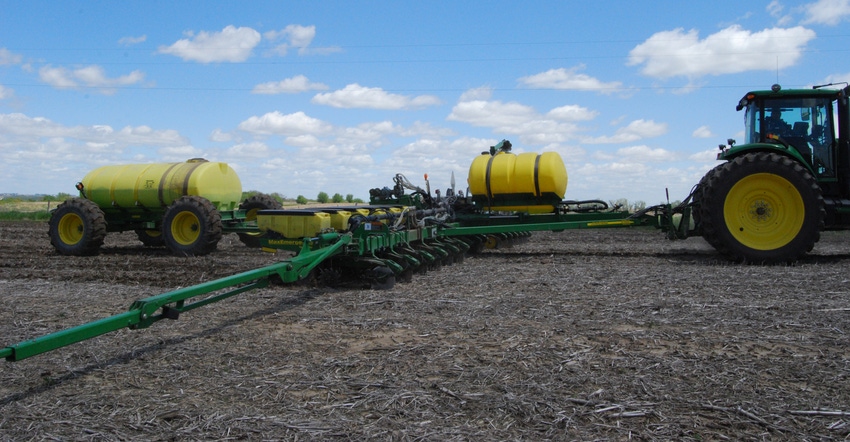April 6, 2020

Farmers should be more focused on soil conditions than the calendar for deciding when to plant corn and soybeans. Soil temperatures need to be on the rise — 50 degrees F and rising, says Mark Licht, Iowa State University Extension cropping systems agronomist. Planting 24 to 36 hours before a cold spell — regardless of how long — is putting your seed at risk of cold injury and reduced germination.
“The critical corn planting date for Iowa is before May 18 and for soybeans it’s before May 20,” he says. “If you plant after those dates, you can expect yield losses. Switching to a well-adapted maturity doesn’t pay off until after June 1 for corn, and about June 15 for soybeans. But at that point, it would be more about reducing fall frost risk more than anything.”
Variable seeding rates
There might be some hope when it comes to variable-rate seeding, Licht says. Not necessarily from increasing yields, but from seed cost savings. The typical seeding rate response range for common corn hybrids is going to be 32,000 to 35,000, and 2,000 to 4,000 less for the economic seeding rate, depending on seed costs.
The weather and its interaction with topography and soil is a huge influencer on how variable-rate seeding works. Dry weather typically means depressions and field areas that collect water can support higher seeding rates. However, if conditions are wet, then upland areas and course soils can support higher seeding rates.
For soybeans, using the same 125,000 to 140,000 seeding rate is still a solid recommendation, says Licht. Farmers could possibly drop 25,000 on high-productivity field areas. Field areas that have stress from soybean cyst nematode, iron deficiency chlorosis or similar problems may benefit from higher seeding rates, while areas with high white mold potential may benefit from lower seeding rates.
Row spacing guidelines
Row spacing for corn may produce higher yields for 20-inch rows compared to 30-inch rows when yield potential is greater than 240 bushels per acre. However, below 240 bushels per acre, 20-inch and 30-inch rows are yield neutral. “I’m quite confident of this for north of Highway 30 and west of I-35 in Iowa. Less certain for southern Iowa,” Licht says.
The benefit of narrow rows for soybeans is yield gains could be realized, unless white mold potential is high. The higher yields could help pay for equipment changes. The problems are that a planter, combine head and tires are a huge capital expense and even a soybean yield response may not be able to cover those costs.
Check out the new ISU Guide to Iowa Corn Planting.
Source: ISU, which is solely responsible for information provided and is wholly owned by source. Informa Business Media and all its subsidiaries are not responsible for any of content contained in this information asset.
You May Also Like




